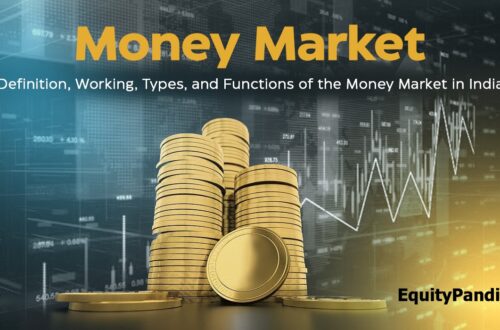A few years ago, I was staring at a small pile of savings, itching to make it work without the stomach-churning risks of the stock market. A friend suggested a money market fund, and I dove in, parking my cash in one that promised safety and a modest return. It wasn’t a jackpot, but it felt like finding a cozy financial blanket – secure, reliable, and ready when I needed it. Money market funds are unsung heroes for cautious investors, offering stability in a volatile world. In this guide, we’ll unpack what these funds are, their various types, and how you can invest in them as of August 2025. With real-world insights and a touch of humor, let’s explore why these funds might just be your financial best friend.
What Is a Money Market Fund?
A money market fund is a type of mutual fund that invests in short-term, low-risk debt securities like treasury bills and commercial paper. Designed to maintain a stable $1 share price, these funds aim to provide steady income and high liquidity. They’re regulated in the U.S. under the Investment Company Act of 1940, ensuring safety and transparency.
Think of them as a savings account with a bit more muscle – offering better yields while keeping your money accessible. They’re ideal for parking cash you might need soon, like for emergencies or short-term goals.
Defining Money Market Funds Simply
At their core, these funds pool money from investors to buy safe, short-term debt instruments. You earn dividends based on the interest these securities generate, typically paid monthly. Unlike stocks, the goal isn’t growth but preservation with modest gains.
When I first invested, I loved knowing my money wasn’t locked away, yet it earned more than a dusty savings account.
Key Features of Money Market Funds
They prioritize safety with high-quality investments, often government-backed. Liquidity lets you redeem shares quickly, usually within a day. Yields in 2025 hover around 4-5%, reflecting higher interest rates. They’re managed by professionals, reducing your workload.
Low fees and daily net asset value (NAV) stability make them user-friendly for beginners.
How Money Market Funds Work
These funds collect investor money to purchase a diversified portfolio of short-term securities, like T-bills or CDs, maturing in under a year. Fund managers aim to keep the NAV at $1, distributing interest as dividends. Investors can buy or sell shares anytime, ensuring flexibility.
In 2025, with Fed rates stabilizing, these funds are attractive for steady returns without the rollercoaster of equities.
The Mechanics of Fund Operations
Managers select securities based on credit quality and maturity, balancing yield and safety. Dividends reflect the portfolio’s interest earnings, adjusted daily. Unlike bank accounts, funds aren’t FDIC-insured but are overseen by the SEC.
I once cashed out shares in a day to cover a sudden expense – the speed was a lifesaver.
Role of Investors and Managers
Investors provide capital, buying shares at $1 each. Managers diversify investments to minimize risk, navigating rate changes. Retail investors access via brokers, while institutions dominate larger funds.
This teamwork ensures funds stay stable and accessible.
Types of Money Market Funds
Not all funds are identical – they vary by the securities they hold. From government-focused to corporate-backed, each caters to different risk appetites. Knowing the types helps you pick the right fit.
In 2025, options range from ultra-safe treasury funds to slightly riskier prime funds, each with distinct yields.
Government Money Market Funds
These invest in U.S. government securities like T-bills or agency notes. They’re the safest, often exempt from state taxes. Yields in 2025 average 4.3%.
I leaned on these during market swings – the government backing felt like a warm hug.
Treasury-Only Money Market Funds
A subset of government funds, these focus solely on T-bills and repurchase agreements. They’re ultra-low-risk, ideal for conservative investors. Returns are slightly lower but rock-solid.
Perfect for those who sleep better knowing Uncle Sam’s got their back.
Prime Money Market Funds
These invest in corporate commercial paper, CDs, and other non-government securities. They offer higher yields but carry slightly more risk. Popular with those chasing better returns.
In 2025, prime funds hit up to 4.8% yields, tempting bolder savers.
Tax-Exempt Money Market Funds
Focused on municipal securities, these avoid federal and sometimes state taxes. Ideal for high-tax-bracket investors, they yield less but save on taxes. Maturities stay short, ensuring liquidity.
Great for those in high-tax states like California or New York.
Institutional vs. Retail Money Market Funds
Institutional funds require high minimums, targeting businesses with millions. Retail funds, with lower entry points, suit individuals. Both offer similar securities but differ in fees and scale.
Retail funds were my entry point – accessible without a corporate budget.
Functions of Money Market Funds
These funds provide a safe haven for capital, offering liquidity and modest income. They bridge short-term financial gaps for individuals and institutions. They also diversify portfolios, reducing overall risk.
In today’s economy, they’re a buffer against inflation and market volatility.
- Stable parking for emergency funds.
- Income stream via dividends.
- Diversification from riskier assets.
- Liquidity for quick withdrawals.
- Economic stability through safe investments.
Providing Liquidity and Safety
Funds ensure quick cash access, often within 24 hours. High-quality securities minimize losses, maintaining the $1 NAV. This makes them a go-to for emergencies.
I’ve relied on this for unexpected bills – no stress, just cash.
Generating Modest Returns
They offer better yields than savings accounts, especially in 2025’s rate environment. Dividends are steady, not spectacular, but beat inflation for short-term needs.
It’s like earning pocket change without risking the wallet.
Supporting Economic Stability
By investing in government and corporate debt, funds keep liquidity flowing. They help banks and firms manage cash, indirectly supporting growth.
During 2008, their role in stabilizing markets was clear.
Comparing Money Market Funds vs. Other Investments
Money market funds differ from stocks, bonds, or savings accounts in risk and purpose. They prioritize safety and liquidity, unlike growth-focused equities or longer-term bonds.
This comparison helps clarify where they fit in your strategy.
| Aspect | Money Market Funds | Savings Accounts | Stocks |
|---|---|---|---|
| Risk | Low | Very low | High |
| Return | 4-5% (2025) | 3-4% | Variable, high potential |
| Liquidity | High | High | Moderate |
| Purpose | Short-term safety | Basic savings | Long-term growth |
| Insurance | SIPC (some) | FDIC up to $250,000 | None |
| Access | Brokerages | Banks | Exchanges |
This table shows their niche as a low-risk option.
Pros and Cons of Money Market Funds
Pros: High liquidity; low risk; better yields than savings; portfolio diversification.
Cons: Returns lag inflation long-term; not FDIC-insured; fees can eat gains; rare “breaking the buck” risk.
Pros and Cons of Money Market Funds vs. Savings Accounts
Pros of MMFs: Higher yields; professional management; check-writing options.
Cons: No FDIC insurance; higher minimums; potential for minor losses.
Advantages and Risks of Money Market Funds
Advantages include safety, quick access, and steady income, perfect for conservative strategies. They’re less volatile than stocks, ideal during economic wobbles.
Risks involve low returns failing to beat inflation, management fees, and rare NAV drops, as seen in 2008’s Reserve Primary Fund.
- Safe for short-term goals.
- Flexible withdrawals.
- Beats checking account rates.
- Supports cautious investing.
Humorously, they’re like the dependable friend who’s never late but won’t win a sprint.
People Also Ask
From Google searches, here are common questions about money market funds with concise answers.
What is a money market fund?
A mutual fund investing in short-term, low-risk debt securities, aiming for stable $1 NAV and modest dividends.
Are money market funds safe?
Yes, they’re low-risk with high-quality investments, though not FDIC-insured. SIPC may protect in broker failures.
How do money market funds differ from money market accounts?
Funds are mutual funds via brokerages; accounts are bank deposits with FDIC insurance, both offering liquidity.
What are the types of money market funds?
Government, treasury-only, prime, and tax-exempt, each varying in securities and risk levels.
How to Invest in Money Market Funds
Investing is straightforward: Open a brokerage account or check your bank for fund options. Minimums start at $1,000, though some require more. Compare yields and fees before diving in.
In 2025, online platforms make it easier, with real-time rate tracking.
Where to Get Money Market Funds
Brokerages like Vanguard, Fidelity, or Schwab offer low-fee funds. Banks like Ally include them in investment portfolios. Robo-advisors like Betterment automate selections.
Check employer 401(k) plans for fund options too.
Best Tools for Tracking Fund Performance
NerdWallet and Bankrate compare yields and fees. Morningstar rates funds for reliability. Use Mint for portfolio tracking.
Simple spreadsheets can monitor your investments over time.
The Role of Money Market Funds in 2025
With rates stabilizing post-2023 hikes, these funds are a hotspot for savers. Yields of 4-5% beat inflation slightly, making them ideal for emergency funds or short-term goals.
Digital platforms and ESG-focused funds are shaping their future, aligning with green investing trends.
FAQ
What is the main goal of a money market fund?
To preserve capital with a stable $1 NAV while providing modest dividends for short-term needs.
Are money market funds a good investment in 2025?
Yes, for safety and liquidity, especially with yields around 4.5%, but not for long-term growth.
How do I choose a money market fund?
Look at expense ratios, yield rates, and security types. Government funds are safest; prime offer higher yields.
Where can I find low-fee money market funds?
Vanguard and Fidelity offer funds with expense ratios below 0.2%. Compare via Morningstar.
Can money market funds lose money?
Rarely, but possible if NAV drops below $1, as in 2008. High-quality funds minimize this risk.




